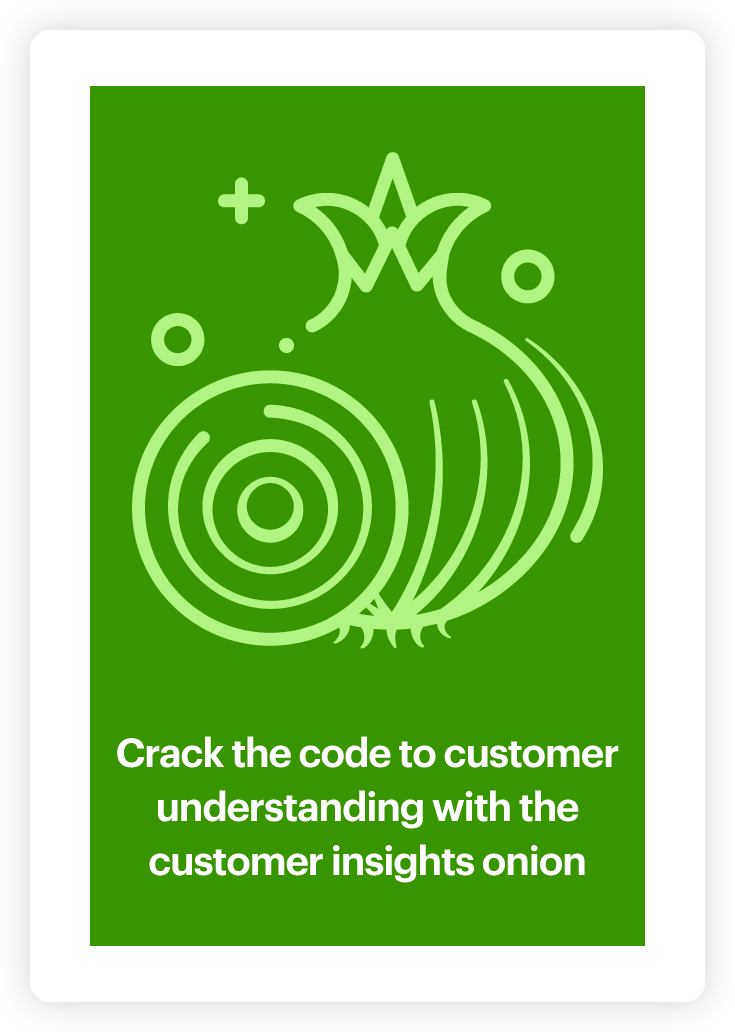How do you write consumer insights? – making insights matter to stakeholders

Those working in the world of consumer insights know that generating meaningful insights from customer data is only half the battle. To make insights valuable you have to effectively communicate the ‘so what’ of it all to your stakeholders – if you’re not doing this you’ll be setting your insights on a path for the bottom of the trash bin.
But beware – before presenting insights to stakeholders, make sure you’re actually dealing with good insights that add value rather than obvious facts lacking meaningful implications. Wondering how you can tell whether an insight is a good insight? Ensure it fulfills the four features of a good customer insight: focused, actionable, authoritative and surprising.
Creating a narrative around your customer insights and articulating them in a way that compels stakeholders to take action can be challenging. But don’t fret – these three pro tips will help you:
1) Craft a narrative that captures the ‘so what’
Stakeholders don’t want to see boring stats and numbers, they want to hear or read a compelling narrative that illustrates the implications of insights in their world. To put it simply: to make your insights matter, you need to identify and communicate the ‘so what’ from a consumer and stakeholder perspective.
To boil down the ‘so what’, ask yourself the following questions:
- What areas of the business does the insight pertain to?
- What business objectives could be influenced by this insight?
- What actions can be taken based on this insight?
2) Keep it concise
While it is necessary that your insight statement includes all the relevant information, you should also aim to communicate it in as few words as possible. Don’t muddle your message with details that don’t matter to your stakeholders – if they have questions, they will ask!
When writing your insight, ensure you don’t wander off course and stick to the actual facts your customer insights analysis uncovered.
3) Use authoritative language
If you’re unsure about the information you’re presenting, how could you possibly convince stakeholders?
This is why using affirmative, authoritative language that doesn’t leave room for doubts or speculations is essential. Your customer insights are facts generated from a representative set of consumer data and rooted in a sound methodology – focusing on this authoritativeness builds stakeholder confidence and motivates them to take action. So instead of using language like “the analysis suggests/might imply that”, use expressions such as “the data illustrates/is telling us”.
Getting it right with stakeholders: Example of an insight statement
Wondering how to put these tips into practice? This is what a good insight statement could look like:
Imagine a scenario where you are conducting customer insights research and analysis by comparing positive and negative reviews of your new product line. The analysis found that while customers are happy with the look of your new headphones, they report issues with their sound quality and battery life. This explains why sales and customer satisfaction have dropped. You want to pass this information on to your product development team to ensure they address these pain points while maintaining the current design.
Writing an effective insight statement for these findings could take the following shape:
“The analysis of our customer data is telling us that while the design of our new headphones highly resonates with customers, they are not happy with their sound quality and battery life. This consumer insight explains why sales and customer satisfaction have dropped. With this in mind, our product development team needs to address these technical issues, while maintaining the current headphone design. Successfully applying these changes increases our chances of boosting sales and customer satisfaction.”
Time to make your insights matter
So how do you write consumer insights that resonate with stakeholders and compel them to take action? Everything starts with generating high-quality insights based on good data and a sound methodology. Once you have these high-quality insights in hand, it all boils down to communicating the ‘so what’ concisely and with authority to stakeholders.
Ready to make our consumer insights presentation tips part of your customer insights strategy? Set yourself up for success with our comprehensive customer insights framework or book a no-commitment discovery call!
